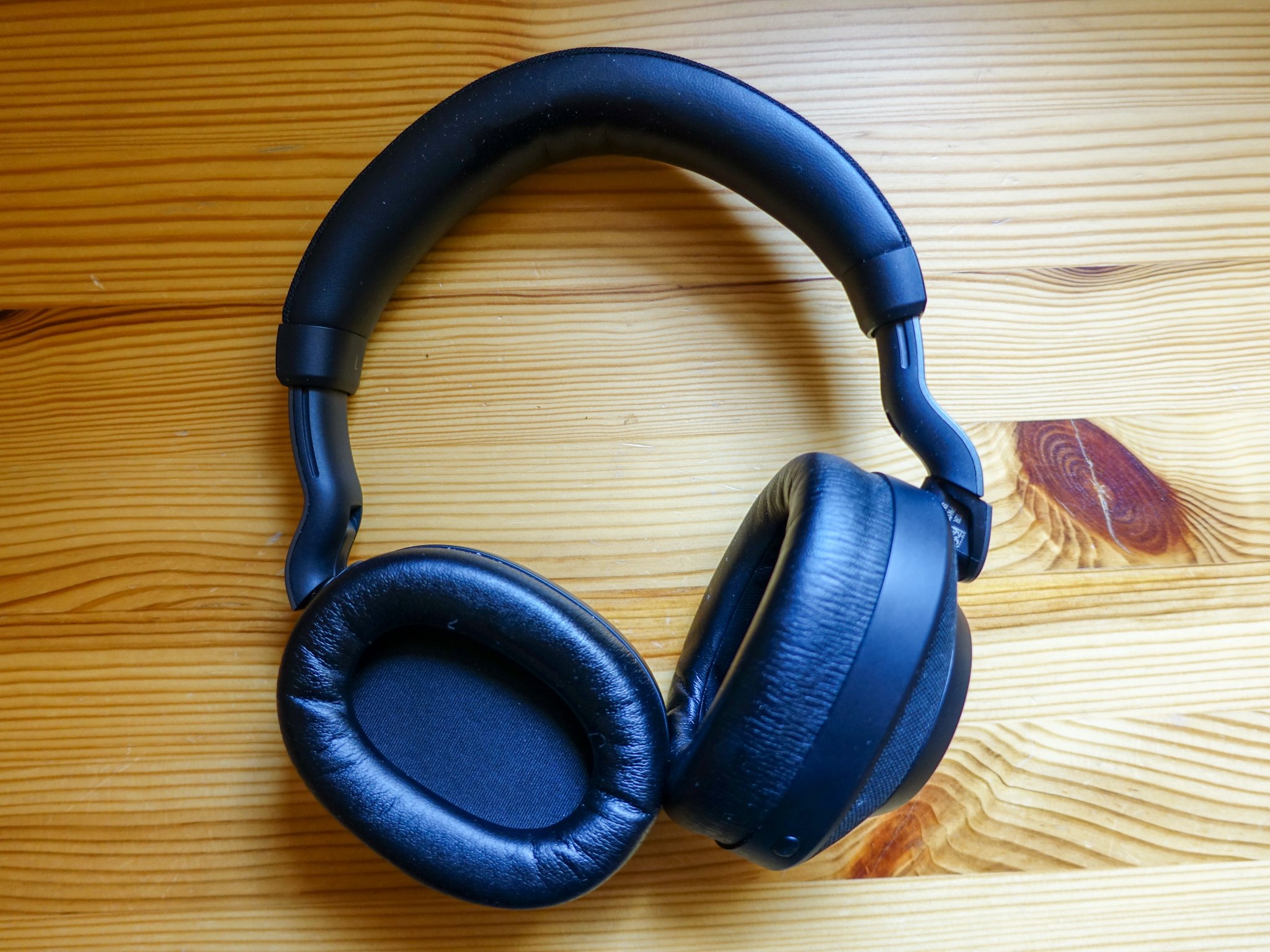How much is too much to pay for good headphones? Searching for 'bluetooth headphones on Amazon nets a list of diverse brands, designs, and sizes, but most of them are not over $100. Headphones are a commodity; you often get a pair of earbuds with your phone — the Pixel 3 even comes with USB-C buds — and Bluetooth headphones can be had for less than the price of a pizza if you know where to look.
So how did it happen that $350 became the price the market settled on for big, plush over-the-ear noise-canceling headphones like the Sony WH1000XM3 and Bose QC35 II? And why, in a market where you can get a pair of great Bluetooth headphones for well under $100, and a decent pair for $50, would you want to spend that much?
If you've ever used a pair of really good noise-canceling headphones, I don't need to tell you the answer: it makes commutes, or flights, or noisy coffee shops, much more enjoyable, and way less distracting.
So here's Jabra's Elite 85h headphones, priced at $300, or $50 less than their nearest competitors. Jabra isn't that well-known in the headphone space, though its $100 Move on-ear cans are considered among the best in their price range, but the company's public perception shot up last year when it released arguably the best-sounding truly wireless earbuds, the Elite 65t, in its sub-$200 price range.
There's a lot to like about the Elite 85h, and a bit to yearn for in a sequel, but overall these are among my new favorite noise-canceling headphones, and one of the easier to recommend to most people.
The Good
- Amazing battery life, fast USB-C charging
- Nice amenities like water resistance, physical controls, auto-pause
- Very good noise cancelation and sound quality
The Bad
- SmartSound is a bit buggy
- Heavy
- Only available at Best Buy
Jabra Elite 85h What sounds good
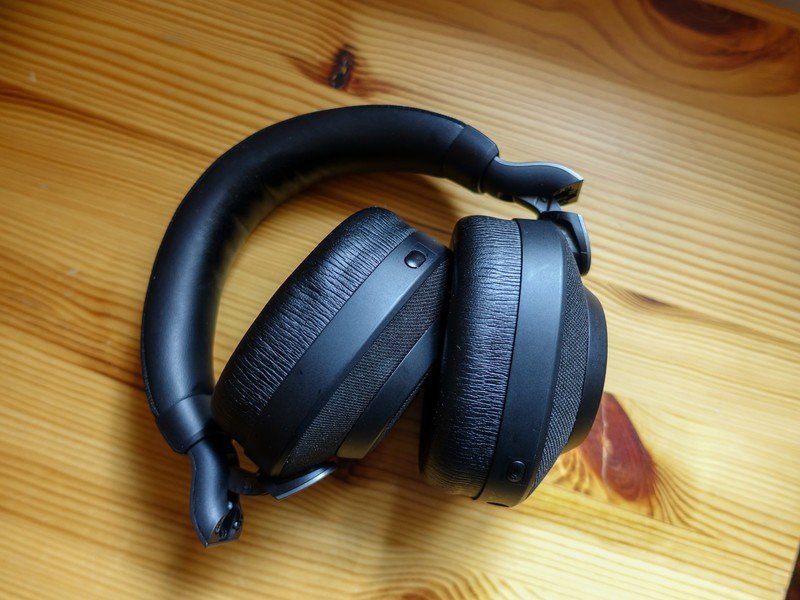
My first impression of the Elite 85h wasn't good. The maximum volume on most of my devices was too low, and getting a stable connection seemed to be more a matter of luck than anything else. A recent firmware update fixed both problems, which is why I've spent the better part of a month luxuriating in their excellence.
But I was hopeful the Elite 85h would be a good pair of headphones, even while I waited for them to be updated, for one reason: the company's Elite 65t truly wireless headphones are my favorite earbuds, and are the first pair I reach for when leaving the house every day, despite a growing number of alternatives in my repertoire.
Jabra claims a few things about the Elite 85h that should help it stand above the competition: 36-hour battery life and fast charge with USB-C; rain and water resistance; fantastic build quality and comfort; and superb noise cancelation, with a new system called SmartSound that dynamically adjusts isolation levels based on the environment.
Lower down the list of features is stellar audio quality, which is understandable, but I'll get into why I'm fairly happy with that aspect, too.
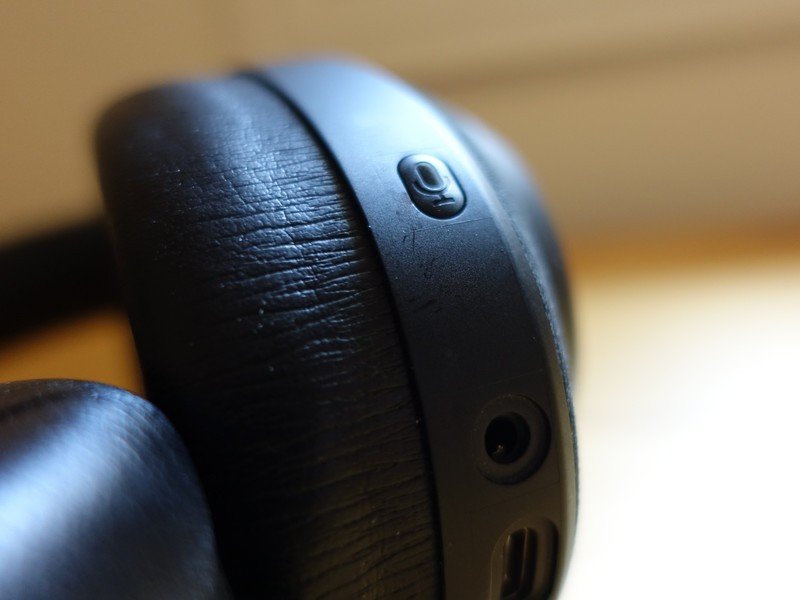
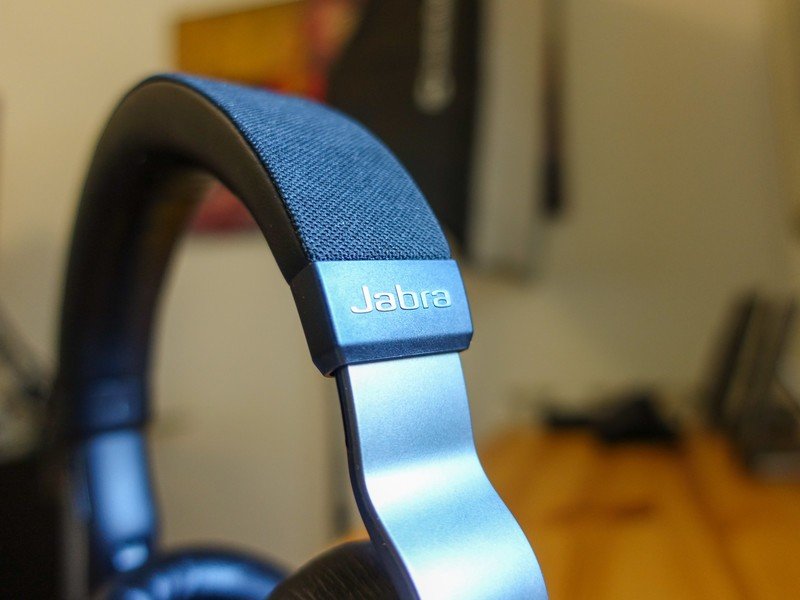
First, comfort: at 296 grams, these are pretty heavy headphones, but the plastic band, covered in a spongy mesh, does a good job spreading the weight evenly. I've worn these for hours at a time and but for minor adjustments, they're definitely great for long working sessions. The ear pads are fake leather, but it hasn't been hot enough where I live to determine whether they will get gross and sweaty, though they're big enough to envelop my ears with some room to spare. Your mileage may vary.
They may be heavy but the Elite 85h are super comfortable and can be worn for hours at a time.
As for conveniences, I love the fact that the Elite 85h automatically pause when removed from the head and resume when put back. It's a small thing, but I loved it on the Elite 65t and I appreciate it just as much here, too. Similarly, the headphones easily connect to two devices at once so it's not a hassle to switch between them, and turning them on and off is as simple as swiveling the ear pads themselves. In fact, there's no power button at all; Jabra rightly assumes that when they're not in use, you'll likely fold these up and put them away somewhere. There is also a customizable sleep timer through the app, so even if you forget to explicitly turn them off they won't chew through battery.
Speaking of Sony, Jabra claim that these have industry-leading ANC, or active noise cancelation, and while the isolation is very good, the algorithm is not even close to being as effective as Sony's latest WH1000XM3, or even Bose's QC35 II. While ANC at its most severe does cut out a fair amount of ambient sound, it's still easy to hear muffled conversations, or the cry of a baby, or the roar of a bus or plane. Sony's proven itself the leader in this respect over its last two generations of ANC flagships, and Jabra, even with SmartSound, isn't rivaling them.
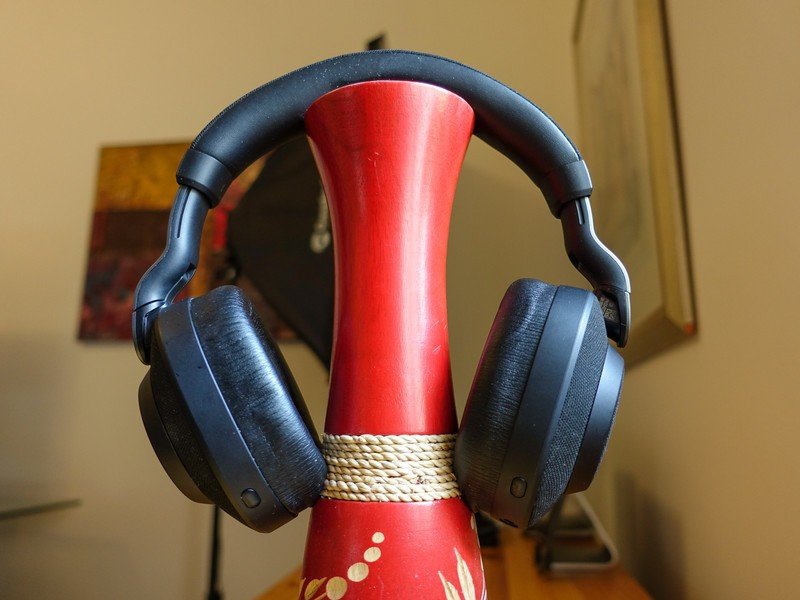
That said, I've been pretty happy with how the Elite 85h handle ANC, especially when letting SmartSound do its thing; the subtle adjustments it makes based on ambient noise levels is accurate and reassuring. It's nice to know that I'll likely be able to hear a bike bell or car horn when out in the real world. Jabra also says that there's a nano-coating over the Elite 85h's internals that should protect it from water and dust ingress, though I'd still hesitate to take them out in a severe rainstorm.
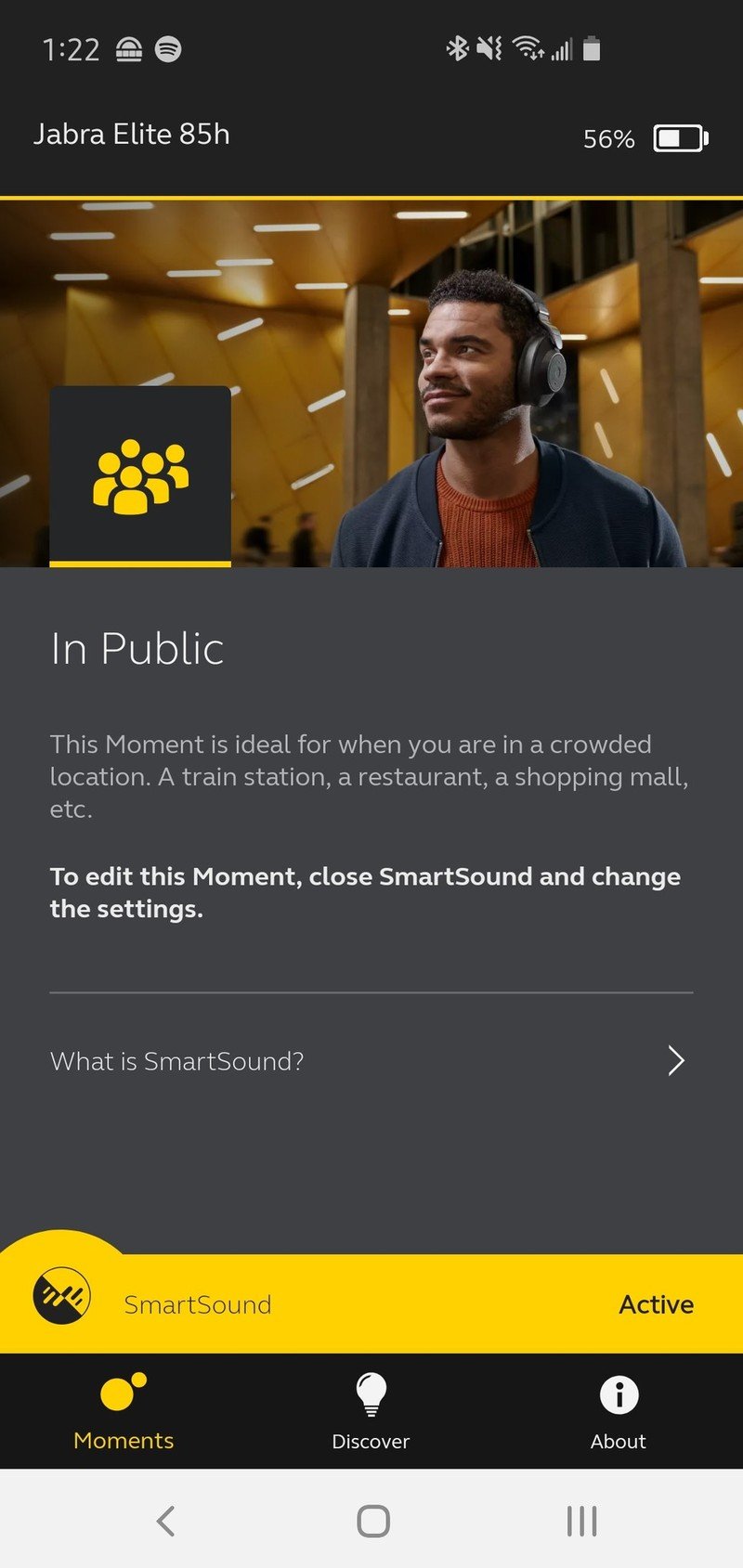
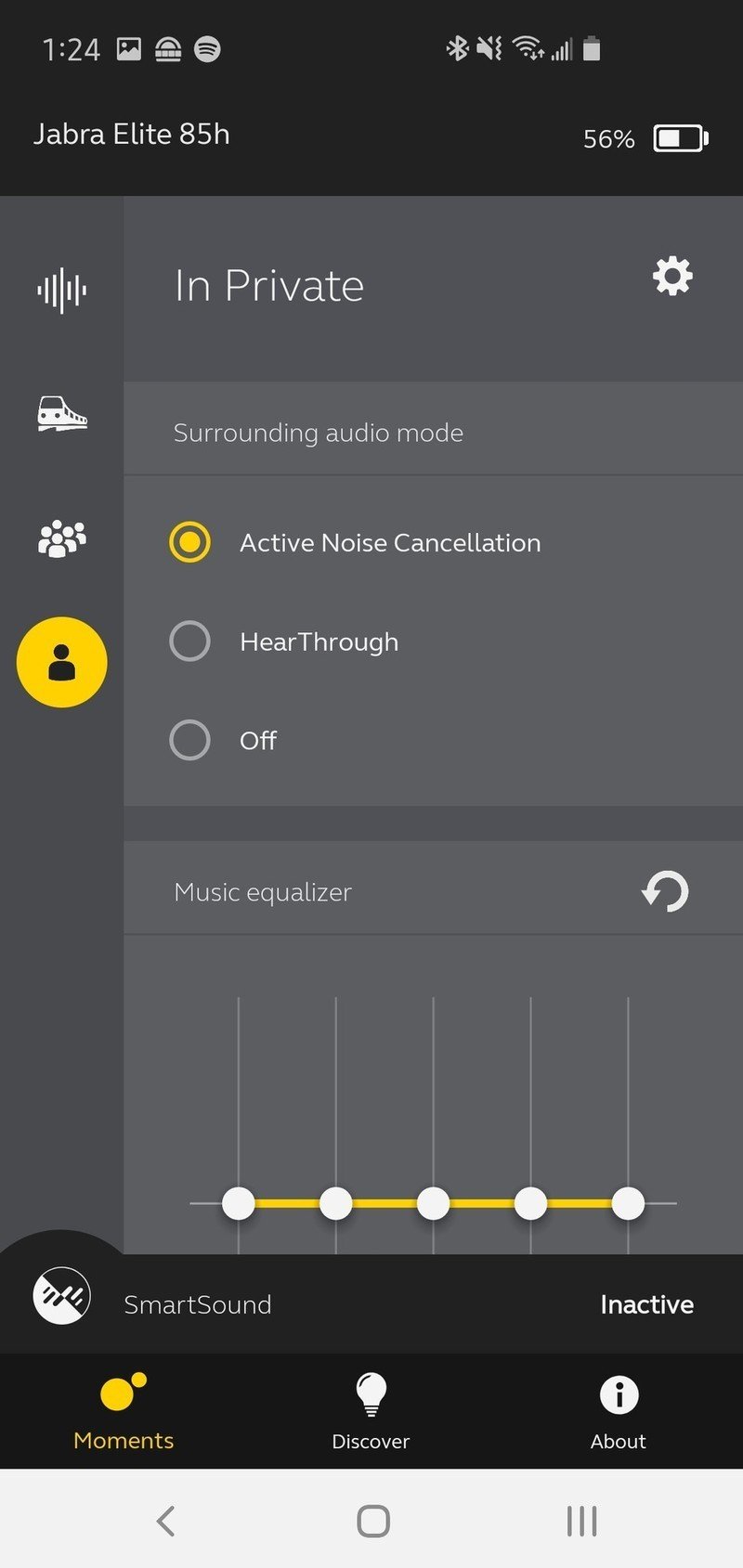
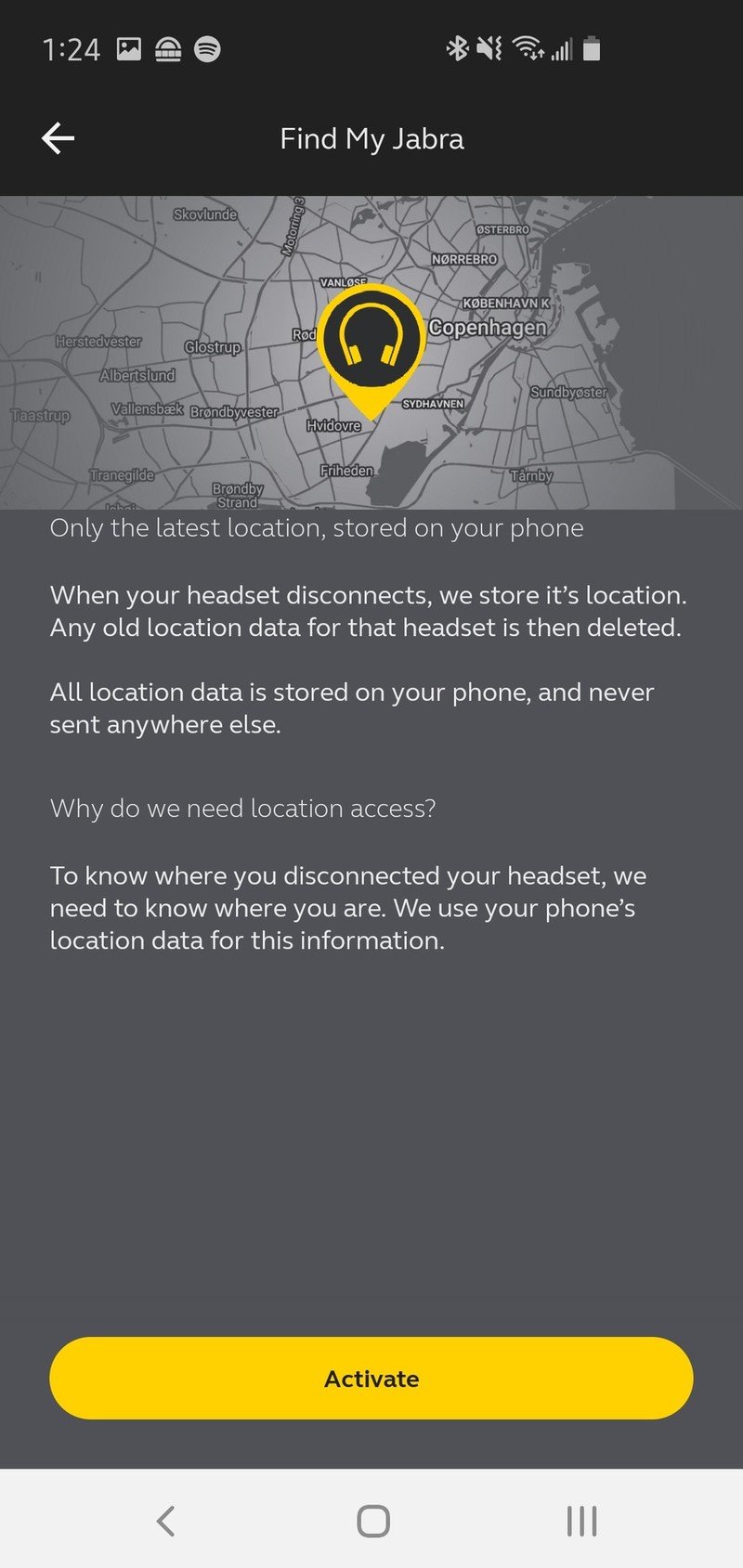
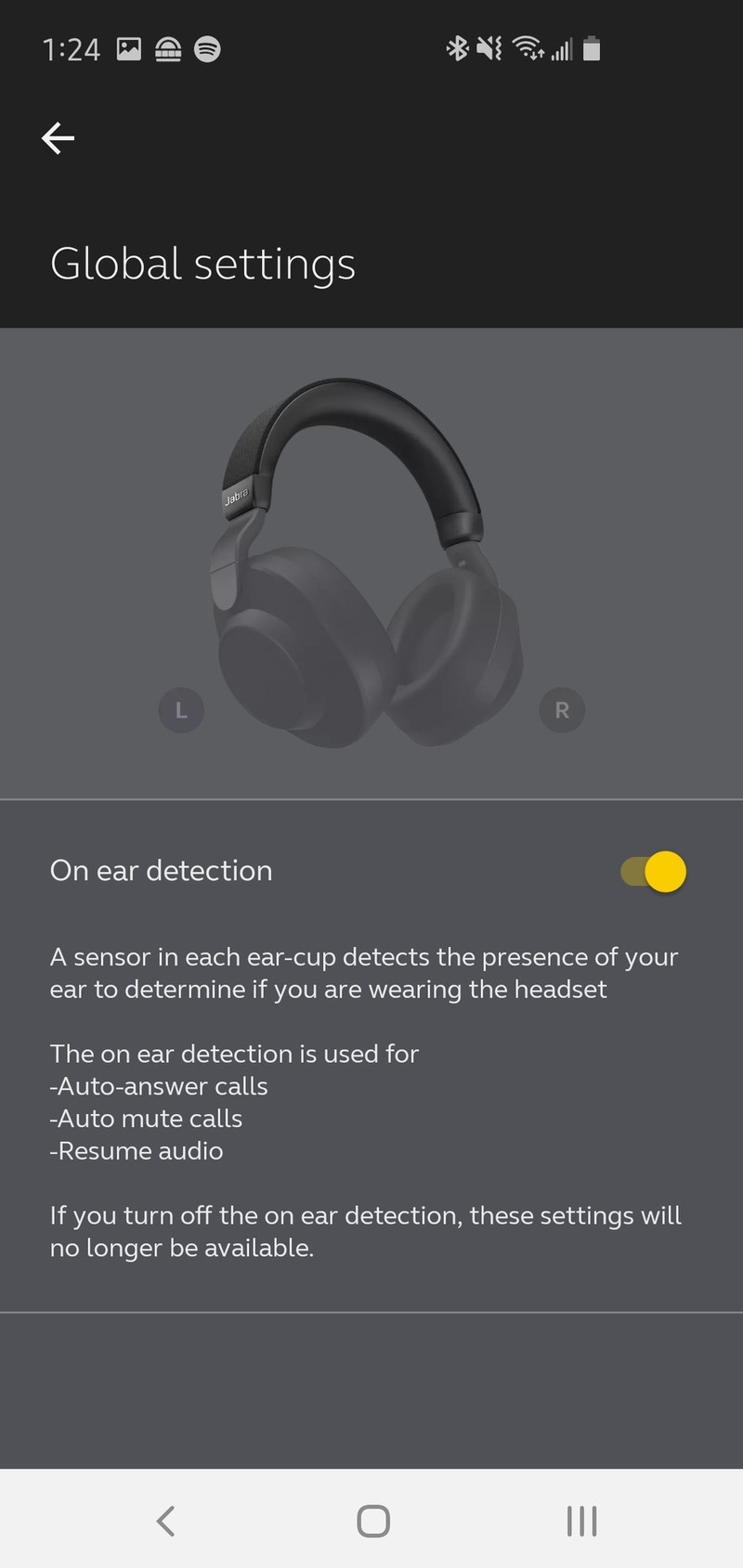
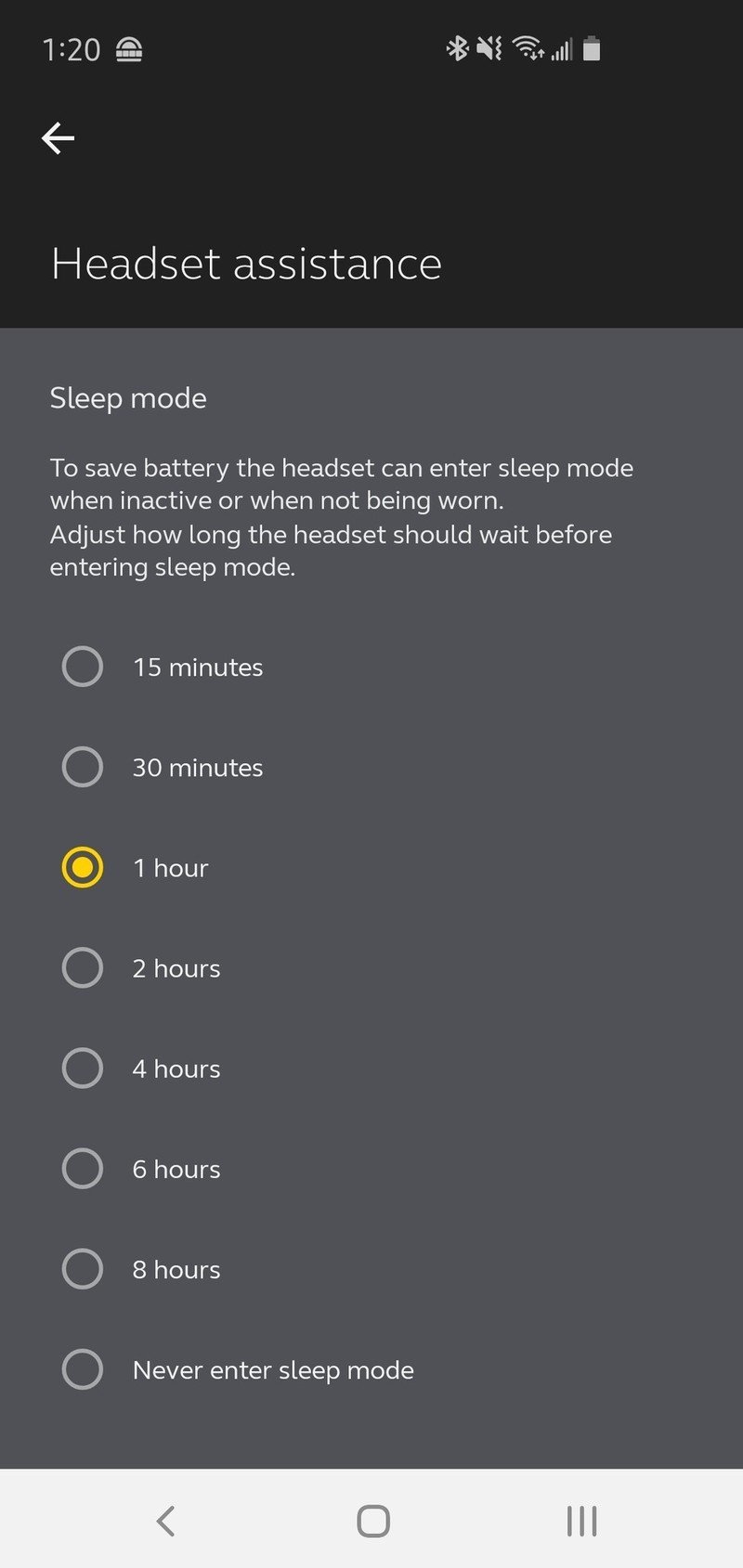
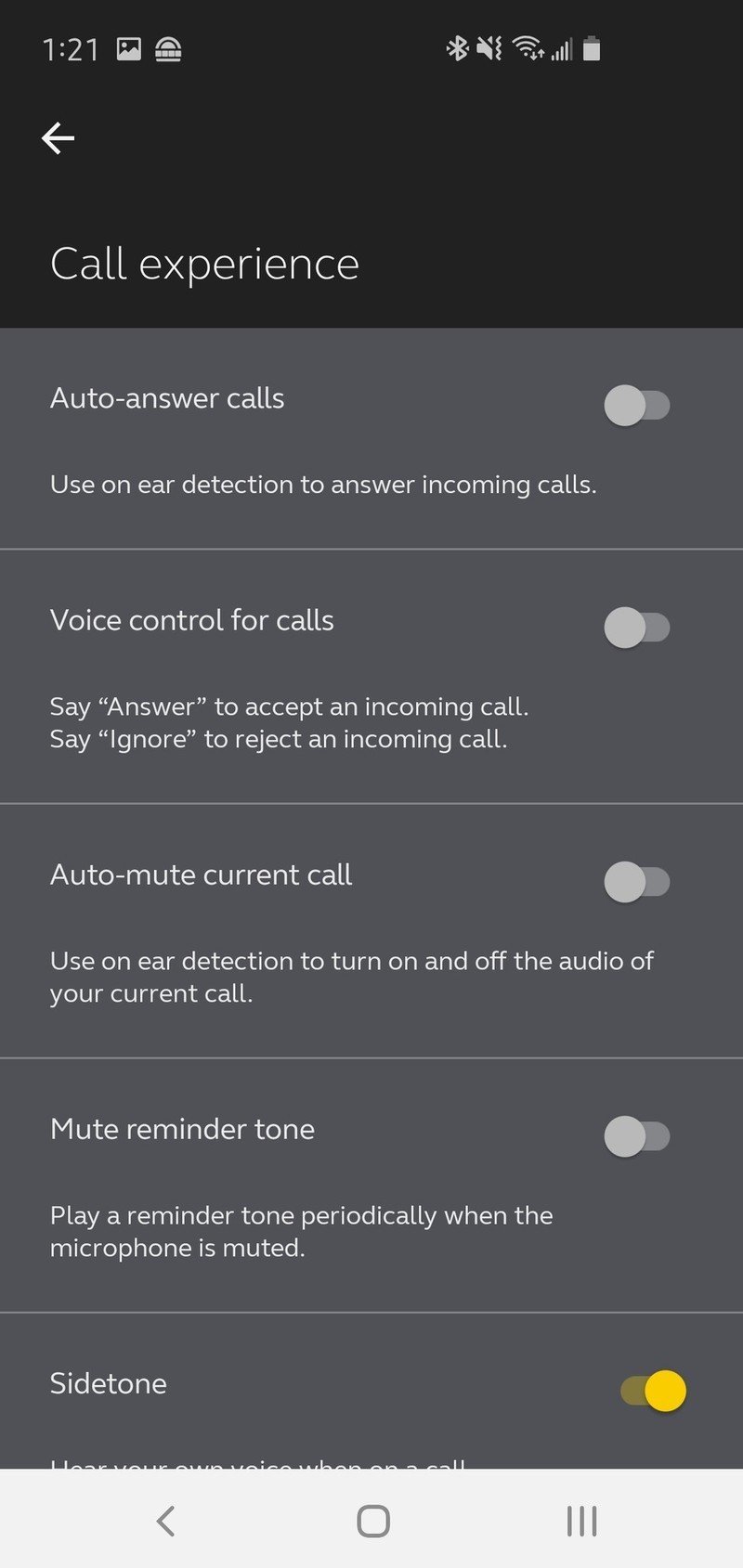
Shifting to sound, I'm happy with the Elite 85h's signature after making a few adjustments through the Jabra app. It's not as bass-apparent as Sony's headphones, and offers very forward minds, like voices and punchy guitars, and brighter treble than I'd prefer, but with a few tweaks, I was able to get the headphones to a sound I enjoy very much even now. I prefer listening to music on the Sony WH1000XM3s, but there are so many other aspects of the Elite 85h that I prefer so it largely evens out.
For one thing, the Elite 85h's battery life is insane; I got around 32 hours before having to recharge, which is a few hours lower than Jabra claims, but I also listen at higher volumes than their tests. Charging via USB-C is super handy, too, and a few minutes is enough to go from zero to 25%.
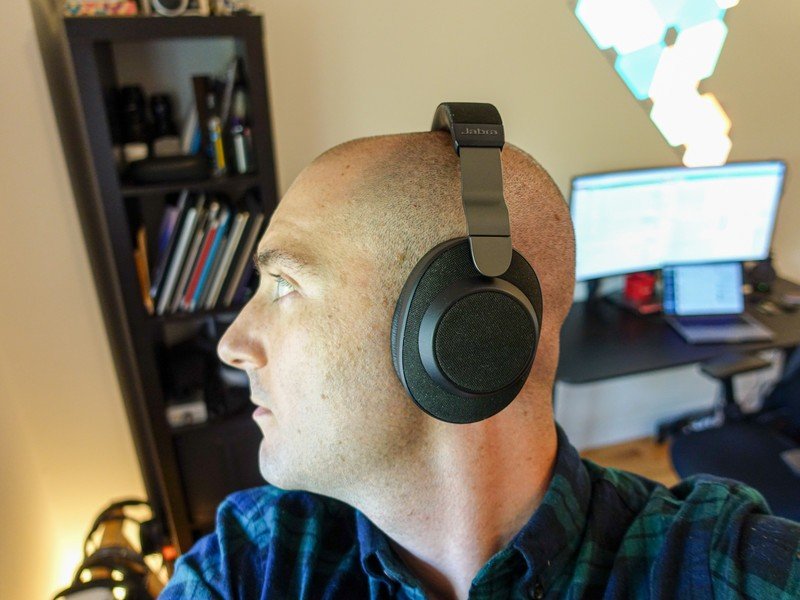
Call quality is also very good, but I'll be honest: I rarely make phone calls, and I even more rarely make them when wearing over-the-ear headphones (since I'm usually at home and the headphones are connected to a computer, not a phone). Still, Jabra's pedigree as a primo headset maker shines through here.
Back at CES when I first tried the headphones, Jabra was promising hands-free voice assistant activation, but the experience didn't mean their expectations before shipping so the feature was disabled. There is, however, a dedicated voice assistant button on the left earcup and it can be configured to work with a phone's default — Google Assistant or Siri — or Alexa when the app is installed and running in the background. It's not the full Alexa experience since it only uses Amazon's limited third-party API, but it's good enough. There are also physical play/pause and volume controls on the right earcup, embedded into the mesh housing, and they're great — much better than any gesture controls found on other devices. Sony, are you listening?
Finally, the Elite 85h come with a nice travel case with a 3.5mm headphone cord for connecting to legacy devices and planes.
Jabra Elite 85h What sounds hollow

My only major criticism of these headphones is something that's a bit difficult to quantify, but it's worth bringing up anyway: the Elite 85h don't support any high-quality audio codecs.
Bluetooth is a notoriously finicky standard, and by only supporting the legacy SBC codec Jabra ensures that it'll work with everything that says Bluetooth on the box. The problem with SBC, though, is that it sacrifices audio quality by cutting off portions of the higher and lower frequencies in the same of compression; competitors like Qualcomm's aptX, or Sony's LDAC, or even the increasingly widely-used AAC, all sound better.
That said, if you're streaming variable bit rate music through Spotify or Apple Music, or you're just not the most obsequious listener, this may not be an issue for you. It's disappointing because it doesn't offer the headphones room to breathe with higher-quality sources. Even OnePlus's $99 Bullets Wireless 2 headphones support Qualcomm's superb aptX HD codec, so there's really no excuse other than trying to save money on licensing, that these don't support it.
Not supporting high-quality codecs isn't a condemnation, but it's a pretty disappointing oversight.
Another minor issue is that SmartSound isn't always very accurate; according to Jabra, its algorithm uses four of the headphone's eight microphones to check for ambient noise every few seconds and dynamically adjusts the ANC based on 6,000 different audio profiles pre-installed on the device. Too many times, though, I got an "In public" preset when sitting in my quiet office, which automatically enables HearThrough — engaging the microphones to pipe in outside sound so you can ostensibly have a conversation without having to remove the headphones — which was frustrating and plain wrong.
The fact that the headphones actually announce a change in profile is also a bit odd, since it disrupts the audio source — and given its predilection for quickly cycling through different profiles, I usually elected just to disable SmartSound entirely.
Jabra Elite 85h Should you buy them?
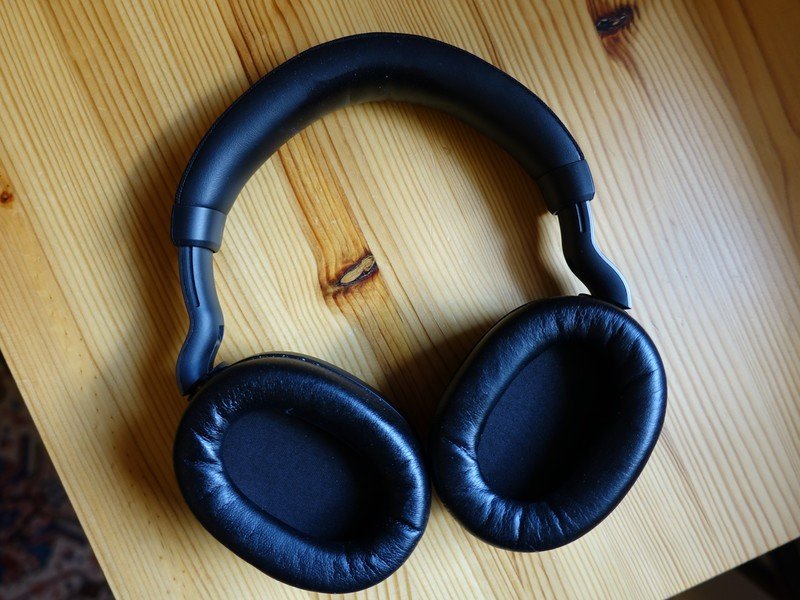
By undercutting Sony and Bose and offering ANC and sound quality that's nearly as good, while extending battery life and providing a host of other wonderful conveniences, the Elite 85h are definitely worth buying. There are a few software-related quirks to fix in upcoming firmware updates, and I'd prefer a bit more bass, but at $300 these are easy to recommend if you're looking for a heavy-duty noise-canceling pair of cans.
4 out of 5
They're going to stay my travel headphones for the immediate future because of those conveniences, and I hope that with future updates Jabra can improve the sound quality even further.
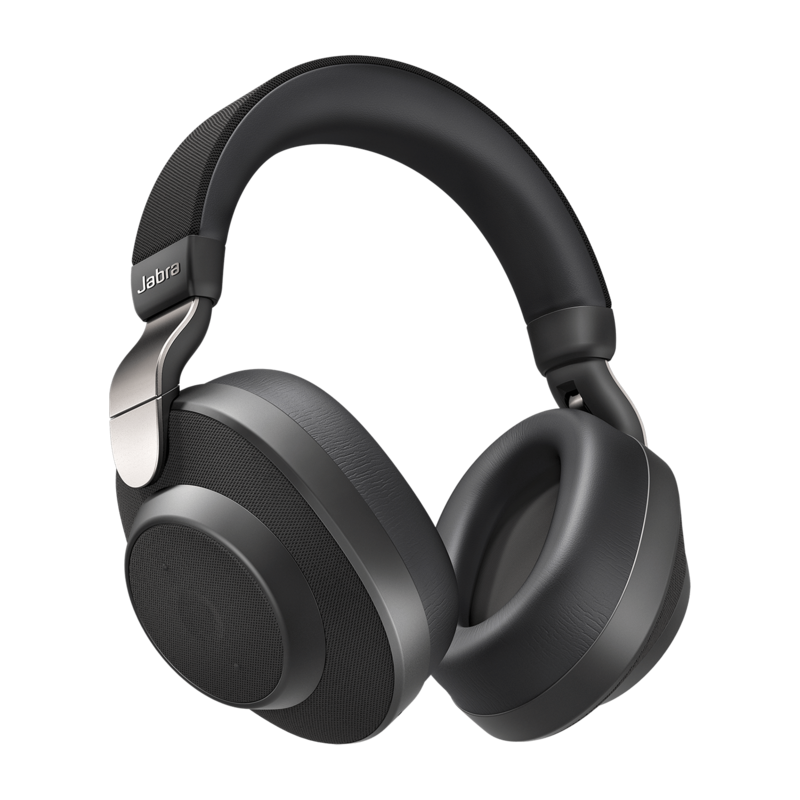
A fantastic pair of noise-canceling headphones with a couple of quirks.
Jabra's first pair of noise-canceling over-the-ear headphones sound great and has decent noise-cancelation, but it's the little conveniences like incredible battery life, water resistance, and physical controls, that make it a true competitor to Sony's WH1000XM3.
Daniel Bader was a former Android Central Editor-in-Chief and Executive Editor for iMore and Windows Central.
